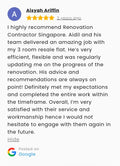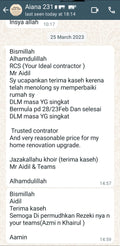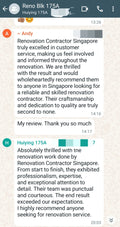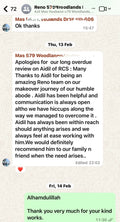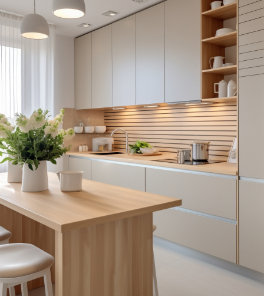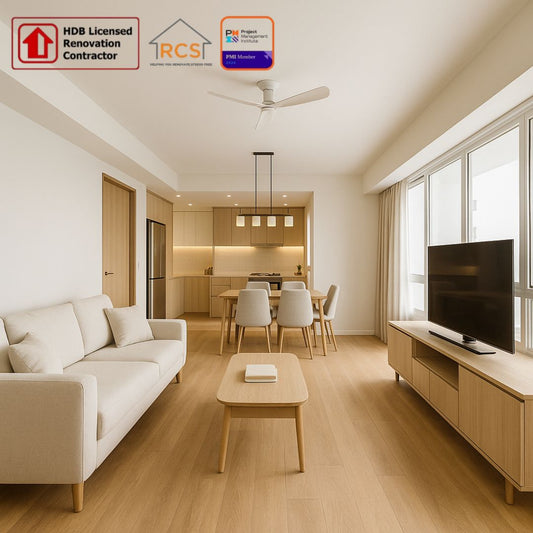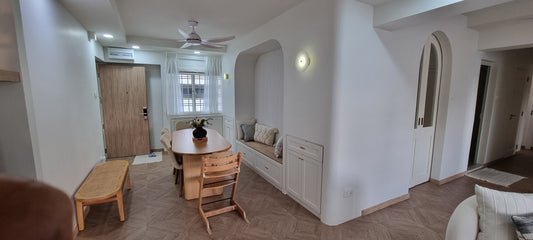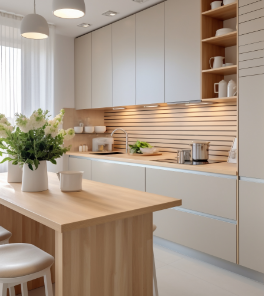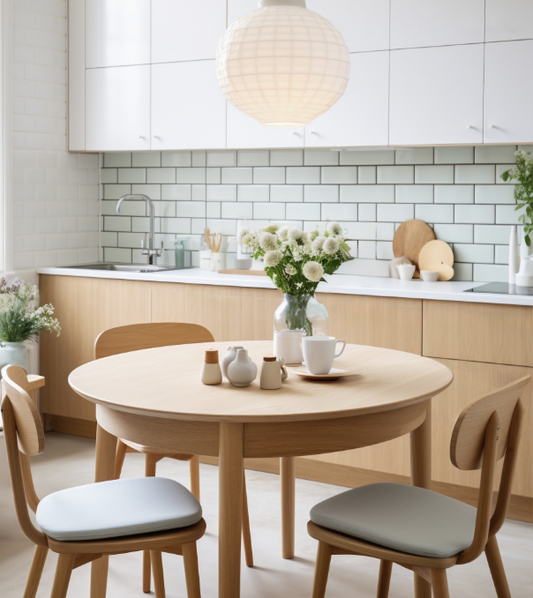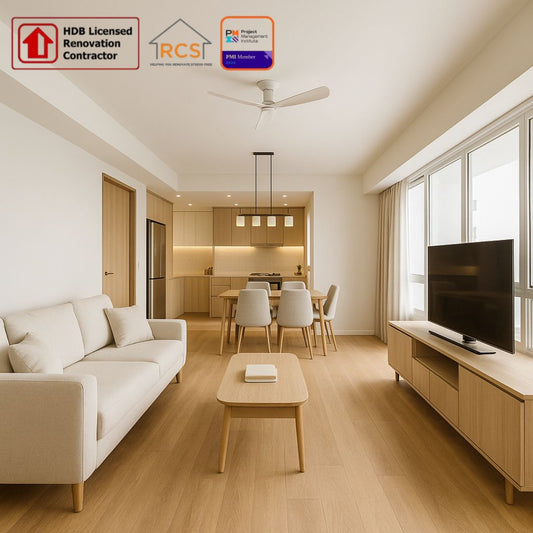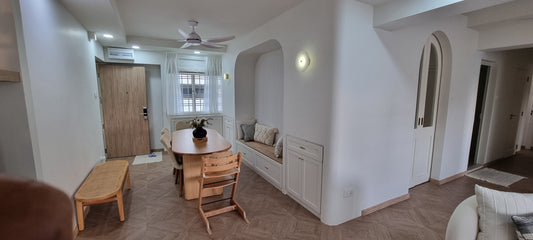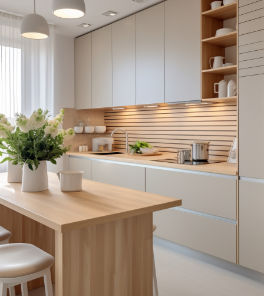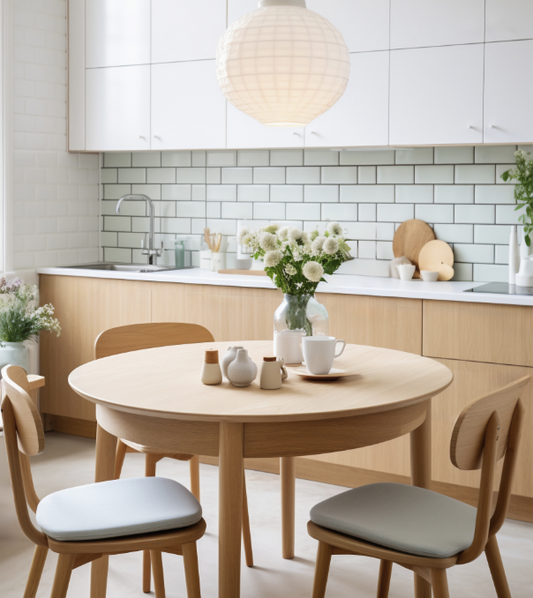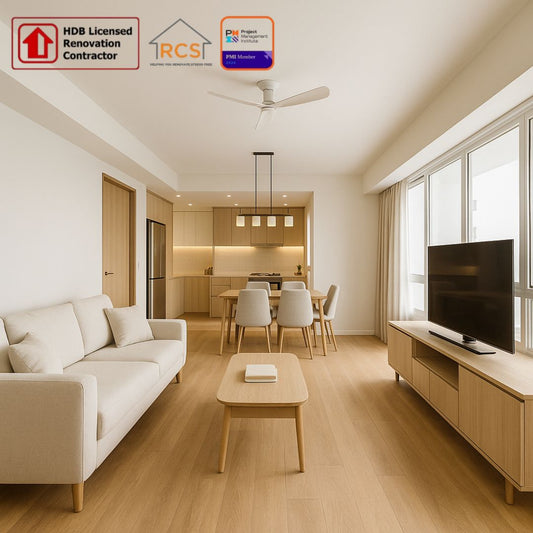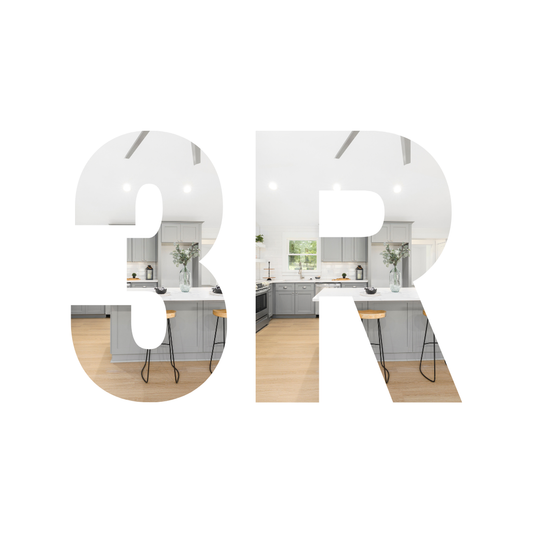Understanding Building Maintenance Challenges in Tropical Climate
Singapore property owners face unique building maintenance challenges due to tropical weather conditions. High humidity and intense rainfall create ongoing threats to structural integrity.
This comprehensive guide explores common wall issues, moisture problems, and professional repair solutions. Furthermore, we'll examine preventive strategies that protect your property investment long-term.
Whether you're dealing with apartment leaks, concrete deterioration, or general building envelope concerns, understanding these issues helps make informed decisions about property maintenance.
🔧 Need Expert Building Assessment?
Connect with experienced property maintenance specialists:
💬 Get Professional Consultation - WhatsApp Now
For detailed service information and pricing, visit: renovationcontractorsingapore.com
Common Structural Issues in Singapore Properties
Tropical climate conditions accelerate building deterioration through various mechanisms. Understanding these patterns helps property owners recognize problems early.
Water Infiltration and Moisture Problems
Water infiltration affects both residential and commercial buildings throughout Singapore. Moisture penetration occurs through multiple pathways including deteriorated seals, structural cracks, and failed waterproofing systems.
Apartment leak issues frequently develop in:
- Bathroom and kitchen areas with plumbing connections
- Exterior facades facing prevailing wind directions
- Balcony and window interface zones
- Roof connections and parapet walls
- Underground and basement areas
Bathroom waterproofing failures often require comprehensive toilet renovation solutions to address underlying moisture problems. Similarly, kitchen moisture issues may necessitate complete kitchen renovation planning to prevent future water damage.
Early moisture detection prevents extensive property damage. Therefore, regular building inspections identify developing problems before they require major intervention.
Concrete Deterioration and Structural Concerns
Concrete restoration becomes necessary when reinforcement corrosion occurs. This process begins when chlorides and moisture penetrate concrete protective layers.
Structural damage signs include:
- Surface spalling with concrete pieces falling
- Rust staining on concrete surfaces
- Hollow sounds when tapping affected areas
- Visible steel reinforcement through concrete cover
- Progressive crack widening over time
Professional structural assessment determines appropriate repair methods for lasting solutions. Moreover, addressing concrete deterioration prevents safety hazards and costly emergency repairs.
Facade Problems and Exterior Building Envelope Issues
Exterior wall coating failure exposes building structures to weather damage. Singapore's intense UV radiation and thermal cycling stress protective coatings beyond design limits.
Facade restoration addresses multiple concerns including:
- Coating adhesion failure and peeling
- Joint sealant deterioration at material interfaces
- Thermal expansion crack development
- Water penetration through compromised surfaces
- Aesthetic deterioration affecting property value
Professional painting services for HDB and condo properties provide both protective and aesthetic benefits. Regular facade maintenance extends coating life and prevents water infiltration problems. Additionally, planned maintenance costs less than reactive emergency repairs.
Root Causes of Building Deterioration
Understanding deterioration mechanisms helps property owners implement effective prevention strategies. Singapore's environmental conditions create specific challenges for building materials.
Climate Impact on Building Performance
Tropical climate characteristics directly affect building durability. Consistent high humidity maintains moisture levels that promote material degradation.
Annual rainfall exceeding 2,400mm creates hydrostatic pressure against building exteriors. Intense storm events test waterproofing systems beyond normal operating conditions. Furthermore, temperature variations cause thermal stress in building materials.
UV radiation exposure degrades polymeric materials including sealants and protective coatings. This degradation creates pathways for moisture penetration and subsequent damage.
Construction Age and Material Factors
Older buildings used construction materials and methods that are now outdated. Many properties built before 1990 require significant building maintenance upgrades.
Legacy plumbing systems using cast iron pipes experience higher failure rates. These failures often occur within wall cavities, causing extensive hidden damage before detection.
Original waterproofing technologies had shorter service lives compared to modern systems. Therefore, older buildings require more frequent waterproofing renewal.
Design and Construction Quality Issues
Poor initial construction quality accelerates building deterioration. Inadequate surface preparation, improper material selection, and insufficient quality control create long-term problems.
Drainage design deficiencies cause water accumulation around building foundations. This standing water increases hydrostatic pressure and accelerates material degradation.
Insufficient expansion joint provision leads to stress crack development. These cracks provide water entry points that compromise building envelope integrity.
Professional Building Maintenance Solutions
Modern building maintenance uses advanced diagnostic tools and repair materials. Professional approaches provide longer-lasting solutions compared to temporary fixes.
Advanced Diagnostic Techniques
Leak detection services use sophisticated equipment to locate moisture sources accurately. Thermal imaging reveals temperature differences that indicate hidden water problems.
Electronic moisture mapping identifies affected areas without destructive investigation. This precision targeting reduces repair costs and minimizes property disruption.
Structural assessment includes core sampling and material testing. These evaluations determine actual condition and appropriate repair strategies.
Modern Waterproofing Technologies
Contemporary waterproofing systems offer superior performance compared to traditional methods. Advanced materials provide extended service life with enhanced durability.
Liquid Membrane Systems
Liquid applied waterproofing creates seamless protective barriers. These systems adapt to substrate movement and eliminate weak points common in sheet applications.
Crystalline Protection Technology
Crystalline waterproofing penetrates concrete structures and forms permanent protective barriers. This technology provides self-healing properties for minor crack development.
Injection Repair Systems
Pressure injection techniques seal active leaks from within structures. Polyurethane and epoxy materials expand to fill voids and create permanent water barriers.
Structural Restoration Methods
Concrete restoration requires specialized techniques and materials. Professional methods restore structural integrity while preventing future deterioration.
Carbon fiber reinforcement provides structural strengthening without significant weight addition. This modern technique offers superior performance compared to traditional steel reinforcement.
Polymer modified repair mortars bond permanently with existing concrete. These materials resist chloride penetration and provide long-term protection against corrosion.
Selecting Professional Building Maintenance Services
Choosing qualified property maintenance professionals ensures effective problem resolution. Not all service providers offer equal expertise or reliability.
Essential Service Provider Qualifications
Professional building maintenance companies should possess relevant certifications and demonstrated experience. Local registration indicates compliance with Singapore construction standards.
Specialized training in waterproofing and structural repair demonstrates technical competence. Manufacturer certifications provide access to warranty programs and technical support.
When selecting contractors for protective coating applications, researching professional house painting services ensures quality workmanship and materials that provide lasting protection against Singapore's challenging climate.
Insurance coverage protects property owners during repair work. Comprehensive coverage includes both workmanship warranties and public liability protection.
Evaluation Criteria for Service Providers
Request detailed information about diagnostic capabilities and repair methodologies. Quality providers use advanced equipment and proven techniques.
Review past project examples similar to your requirements. Successful completion of similar work indicates relevant experience and capability.
Obtain written estimates that specify materials, methods, and warranty coverage. Detailed documentation prevents misunderstandings and ensures accountability.
Warning Signs of Unreliable Providers
Avoid service providers who cannot demonstrate relevant qualifications or experience. Lack of proper licensing indicates non-compliance with local regulations.
Unusually low prices often indicate corner-cutting or hidden costs. Quality materials and workmanship require appropriate investment.
Pressure tactics and demands for immediate decisions suggest unprofessional business practices. Reputable providers allow time for consideration and comparison.
🏗️ Professional Property Assessment Available
Connect with experienced building maintenance specialists:
💬 Schedule Property Assessment - WhatsApp Direct
Visit renovationcontractorsingapore.com for comprehensive service details and pricing information.
Moisture Control Solutions for Humid Climate
Effective moisture management prevents many building problems before they develop. Singapore's high humidity requires active environmental control strategies.
Ventilation System Optimization
Proper ventilation removes excess moisture from indoor environments. Strategic air movement prevents condensation that leads to material deterioration.
Mechanical ventilation systems include exhaust fans in moisture-producing areas. These systems remove humid air during and after activities that generate steam.
Natural ventilation relies on strategic opening placement to promote air circulation. Cross-ventilation removes moisture-laden air and replaces it with drier outdoor air.
Humidity Control Technologies
Dehumidification systems maintain optimal indoor humidity levels. Target humidity ranges between 50-60% provide comfort while preventing moisture problems.
Smart humidity monitoring provides real-time environmental data. Automated systems respond to humidity increases by activating ventilation or dehumidification equipment.
Vapor barriers prevent moisture migration through building materials. Strategic placement blocks moisture entry while allowing necessary vapor transmission.
Drainage and Water Management
Effective drainage systems direct water away from building structures. Proper grading ensures water flows away from foundations and walls.
Gutter and downspout maintenance prevents overflow that damages building exteriors. Regular cleaning removes debris that blocks water flow.
Surface water management includes permeable paving and landscape design. These features reduce surface runoff and prevent water accumulation.
Cost-Effective Maintenance Strategies
Strategic maintenance planning maximizes protection while minimizing costs. Understanding cost factors helps property owners budget effectively.
Preventive vs. Reactive Maintenance Costs
Preventive maintenance costs significantly less than emergency repairs. Regular building inspections identify problems before they require major intervention.
Early problem detection prevents damage escalation and associated cost increases. Small repairs cost hundreds while major renovations cost thousands.
Planned maintenance allows better contractor selection and competitive pricing. Emergency situations limit options and increase costs.
Factors Affecting Repair Costs
Problem severity directly impacts repair costs. Minor surface issues require minimal intervention while structural problems need extensive work.
Building accessibility affects labor costs and equipment requirements. High-rise exteriors require specialized equipment and safety measures.
Material selection influences both initial costs and long-term performance. Premium materials provide better value through extended service life.
Budget Planning Considerations
Annual maintenance budgets should include regular inspection and minor repair costs. This proactive approach prevents larger expenses.
Reserve funds for major building system renewals based on expected service life. Waterproofing systems typically require renewal every 10-15 years.
Professional maintenance contracts provide predictable costs and regular service. These agreements often include emergency response coverage.
Regulatory Compliance and Building Standards
Singapore building regulations govern property maintenance and repair work. Understanding requirements ensures compliance and proper execution.
Building and Construction Authority Requirements
Major building work requires official permits and approvals. This includes structural modifications, extensive building envelope repairs, and utility system changes.
Professional contractors understand regulatory requirements and handle permit applications. Proper documentation prevents delays and ensures compliance.
Building standards specify acceptable materials and installation methods. Using approved products ensures regulatory compliance and warranty protection.
Multi-Unit Building Considerations
Condominium and apartment building repairs require management corporation coordination. Shared building systems need collective decision-making.
Common property repairs follow established procedures for cost allocation and contractor selection. Professional management facilitates these processes.
Insurance requirements may specify contractor qualifications and coverage levels. Compliance protects all unit owners from potential liability.
Safety and Environmental Regulations
Work safety regulations protect workers and building occupants during repair projects. Proper safety measures prevent accidents and liability.
Environmental regulations govern material disposal and air quality during work. Licensed contractors handle these requirements appropriately.
Noise restrictions limit work hours and methods in residential areas. Planning considers these constraints to minimize disruption.
Long-term Property Protection Strategies
Comprehensive property protection requires integrated approaches addressing multiple building systems. Strategic planning protects investment value over time.
Building Envelope Performance
The building envelope includes all exterior components that separate interior and exterior environments. Optimal performance requires coordination between all envelope elements.
Roof systems, exterior walls, windows, and foundations work together to exclude weather. Failure of any component compromises overall building performance.
Regular envelope assessment identifies developing problems across all building systems. This comprehensive approach prevents isolated repairs that don't address root causes.
Material Life Cycle Planning
Different building materials have predictable service lives under Singapore conditions. Understanding these cycles enables proactive replacement planning.
Exterior sealants typically require renewal every 5-7 years. Waterproofing membranes last 10-15 years depending on exposure conditions.
Protective coatings need reapplication every 3-5 years to maintain effectiveness. Planning these renewals prevents premature material failure.
Technology Integration
Smart building systems provide continuous monitoring of building performance. Sensors detect moisture, temperature, and other conditions that affect building health.
Automated systems respond to detected problems by activating ventilation, dehumidification, or notification systems. This immediate response prevents damage escalation.
Data analysis identifies patterns that predict maintenance needs. This information enables optimized maintenance scheduling and resource allocation.
Emergency Response and Damage Mitigation
Despite preventive measures, building emergencies occasionally occur. Proper response minimizes damage and reduces repair costs.
Immediate Response Procedures
Active water infiltration requires immediate action to prevent extensive damage. Stop water sources where possible and begin drying procedures immediately.
Document damage conditions with photographs before beginning cleanup. This documentation supports insurance claims and professional assessment.
Contact professional emergency services for structural problems or extensive damage. Expert assessment determines safe occupancy and required interventions.
Damage Assessment and Restoration
Professional damage assessment determines the extent of problems and appropriate restoration methods. Hidden damage often exceeds visible problems.
Moisture mapping identifies all affected areas including hidden damage behind finishes. Complete identification prevents mold growth and structural problems.
Restoration planning addresses both immediate damage and underlying causes. This comprehensive approach prevents problem recurrence.
Insurance Considerations
Property insurance coverage varies significantly between policies and situations. Understanding coverage helps optimize claim outcomes.
Professional documentation and repair estimates support insurance claims. Detailed records demonstrate damage extent and repair necessity.
Insurance requirements may specify contractor qualifications and repair methods. Compliance ensures claim approval and proper coverage.
🛠️ Professional Building Solutions Available
Expert consultation for all building maintenance needs:
💬 Expert Building Consultation - WhatsApp Chat
For comprehensive service information, detailed pricing, and terms & conditions, visit: renovationcontractorsingapore.com
Sustainable Building Maintenance Practices
Environmental consciousness influences modern building maintenance approaches. Sustainable practices provide effective protection while minimizing environmental impact.
Eco-Friendly Material Selection
Low-impact materials reduce environmental effects without compromising performance. Water-based products eliminate harmful solvent emissions.
Recycled content materials support circular economy principles while providing effective building protection. Many contemporary products incorporate sustainable components.
Local material sourcing reduces transportation impacts and supports regional suppliers. Local products often perform better in regional climate conditions.
Energy Efficient Solutions
Building envelope improvements reduce energy consumption for climate control. Proper sealing eliminates air leaks that increase cooling loads.
Reflective coatings reduce heat absorption and lower interior temperatures. These products reduce air conditioning requirements and operating costs.
Natural ventilation strategies reduce mechanical system dependence. Strategic design promotes passive cooling through air movement.
Waste Reduction and Material Efficiency
Precise application techniques minimize material waste and environmental impact. Professional installation reduces both waste and costs.
Material recycling programs handle removed materials responsibly. Proper disposal prevents environmental contamination.
Durable repair solutions reduce future maintenance requirements. Long-lasting repairs minimize lifetime environmental impact.
Future Trends in Building Maintenance
Industry developments continue improving building maintenance effectiveness and efficiency. Understanding trends helps property owners prepare for future needs.
Advanced Material Technologies
Self-healing materials automatically repair minor damage without intervention. These innovations reduce maintenance requirements and extend service life.
Nanotechnology applications create ultra-thin protective barriers with superior performance. These materials provide enhanced protection with minimal thickness.
Smart materials respond to environmental conditions automatically. Temperature-sensitive systems adjust properties based on ambient conditions.
Digital Assessment Technologies
Drone inspections enable safe assessment of difficult access areas. Advanced imaging systems detect problems invisible to traditional methods.
Artificial intelligence analysis identifies patterns in building performance data. This technology improves predictive maintenance accuracy.
Virtual reality planning tools help visualize repair projects before implementation. This technology improves planning accuracy and client communication.
Integrated Building Management
Comprehensive building management systems coordinate multiple building functions. Integration provides better performance monitoring and control.
Predictive analytics identify maintenance needs before problems develop. This proactive approach minimizes emergency repairs and costs.
Mobile technology enables real-time communication between building owners and maintenance providers. Immediate notification accelerates response times.
Conclusion: Protecting Your Singapore Property Investment
Effective building maintenance protects property values and ensures occupant safety in Singapore's challenging climate. Understanding common problems and professional solutions enables informed decision-making.
Moisture problems, structural deterioration, and building envelope failures require professional attention. Early intervention prevents extensive damage and costly emergency repairs.
Selecting qualified maintenance professionals ensures effective problem resolution and long-term protection. Professional assessment and treatment provide lasting solutions for Singapore's unique environmental challenges.
Preventive maintenance through regular monitoring and timely intervention reduces long-term costs. Investment in quality maintenance services protects property values and provides peace of mind.
Modern diagnostic techniques and repair materials offer superior performance compared to traditional methods. Professional building maintenance services combine advanced technology with proven expertise.
Recommended Action Steps:
- Schedule comprehensive building assessment to identify existing and potential problems
- Develop preventive maintenance programs based on building age and condition
- Research qualified building maintenance professionals for future needs
- Implement moisture control strategies appropriate for tropical climate conditions
- Consider technology integration for ongoing building performance monitoring
Professional building maintenance services provide the expertise and resources necessary for effective property protection. Taking proactive action today prevents more serious and expensive problems in the future.
For specific service information, detailed pricing, and comprehensive terms & conditions, please visit renovationcontractorsingapore.com for complete information about professional building maintenance solutions in Singapore.





